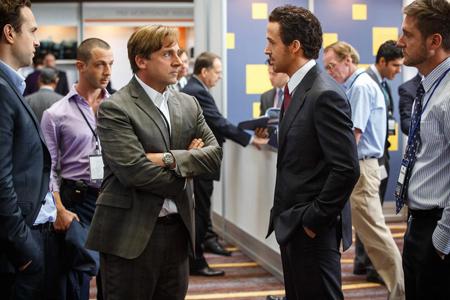The Big Short and the Long Haul
By • February 18, 2016 0 1067

If you are anything like the hordes of people rushing to see this year’s Oscar-nominated movies, then you have seen, or at least heard of, “The Big Short.” But unlike other blockbusters, this movie is more than mere entertainment; it is a timely lesson for many investors, who are once again watching the stock market take a tumble.
As I have written many times, investors are only human — which means they are funny creatures that tend to have short memories and act impulsively. Academics call it the “cycle of emotion” or, even better, the “14 stages of trading psychology”: Optimism, Excitement, Thrill, Euphoria, Anxiety, Denial, Fear, Desperation, Panic, Capitulation, Despondency, Depression, Hope and Relief.
Unless you are extremely indifferent or have never put money into a stock, bond or bank account, you’ve most likely found yourself going through these stages.
But what “The Big Short” teaches us in bright Hollywood colors is that from 1937 to 2007 Wall Street only operated with Optimism, Excitement and Thrill.
What is investing, anyways? It is what the founders of capitalism understood perfectly: how to use someone else’s money to make money for everyone else. In fact, one definition of capitalism is “increasing cooperation amongst strangers.”
The turning point came in 1981, with the first conversion of a Wall Street partnership (Salomon Brothers) into a public company. In a partnership, the partners typically take controlled risks with their money. But when these firms went public the game changed. They were no longer making decisions with their money, it was someone else’s — and the more risks they took, the more money they made. If they bet wrong, they lost someone else’s money, not the partners’.
But if you watched the movie (or have watched the markets in the past couple weeks), you should understand what I hope the average investor will finally realize: there is a difference between saving and investing. One may seem boring and slow, but should be the bedrock of any financial plan. The other is gambling; someone else is placing the bets for you and taking a portion of your winnings if you hit the jackpot.
Once you have enough financial security, then you can jump on the roller coaster of investing. Just make sure you can stay on until you reach the end of the ride and can disembark safely.
As a Certified Financial Planner and fiduciary, I look at all financial products based on their purpose and how they can help my clients build wealth and financial security for their families. But in my industry it is all about Wall Street versus insurance companies.
Perhaps asset allocation needs to expand beyond Wall Street products and the average investor’s only other asset, his or her home. Rather than let your emotions get the best of you, perhaps it’s time we all learned how to manage our cash the way the banks do. After all, they don’t take risks with their money, only ours.
John E. Girouard, author of “Take Back Your Money” and “The Ten Truths of Wealth Creation,” is a registered principal of Cambridge Investment Research and an Investment Advisor Representative of Capital Investment Advisors in Bethesda, Maryland.

